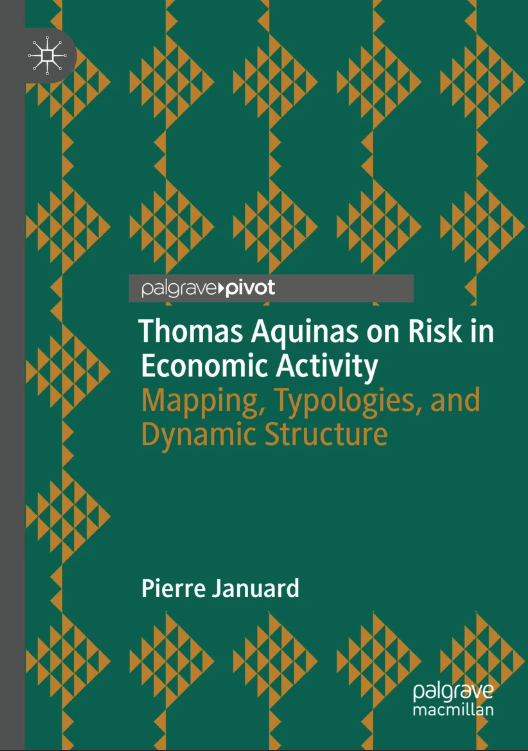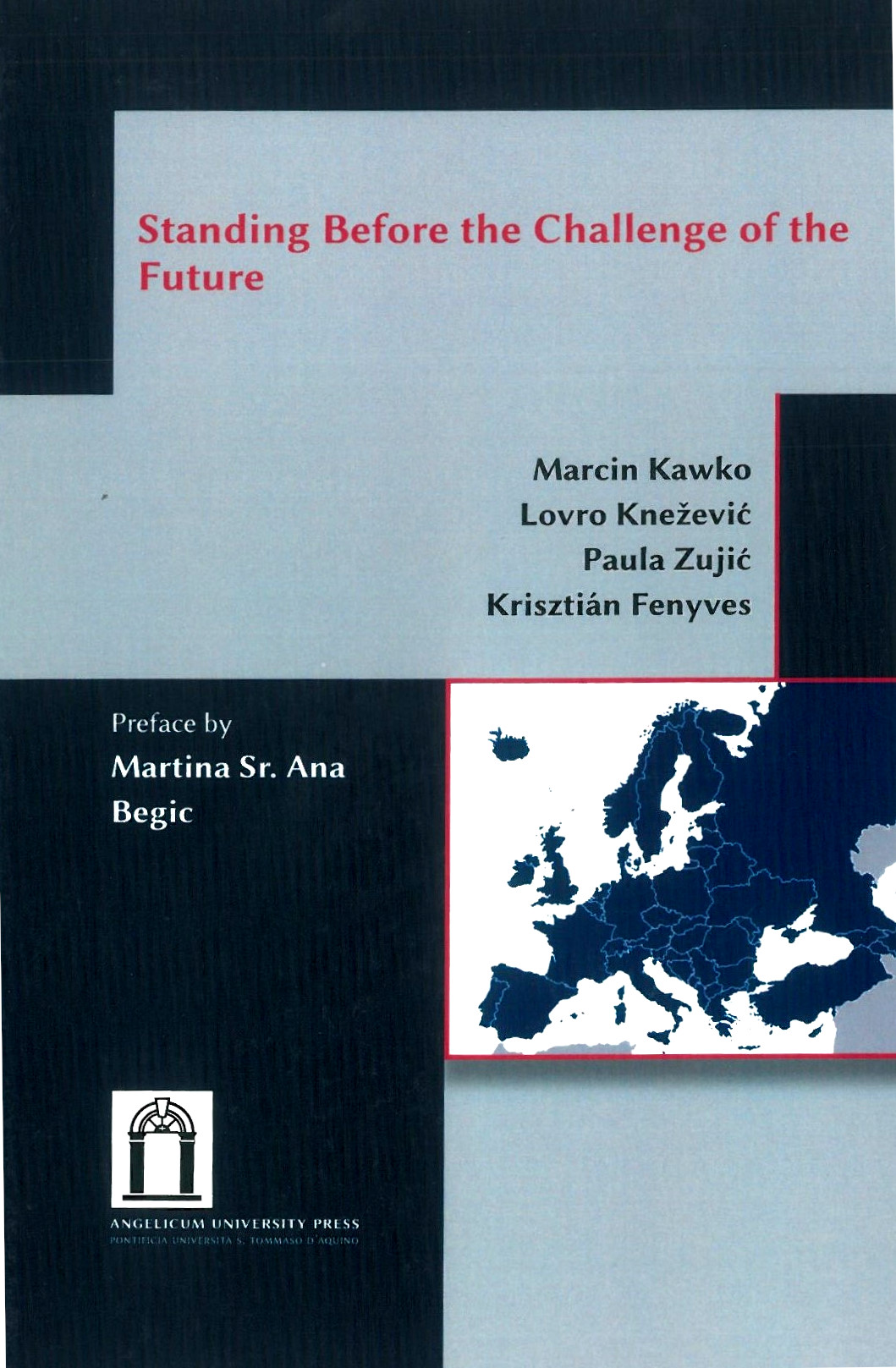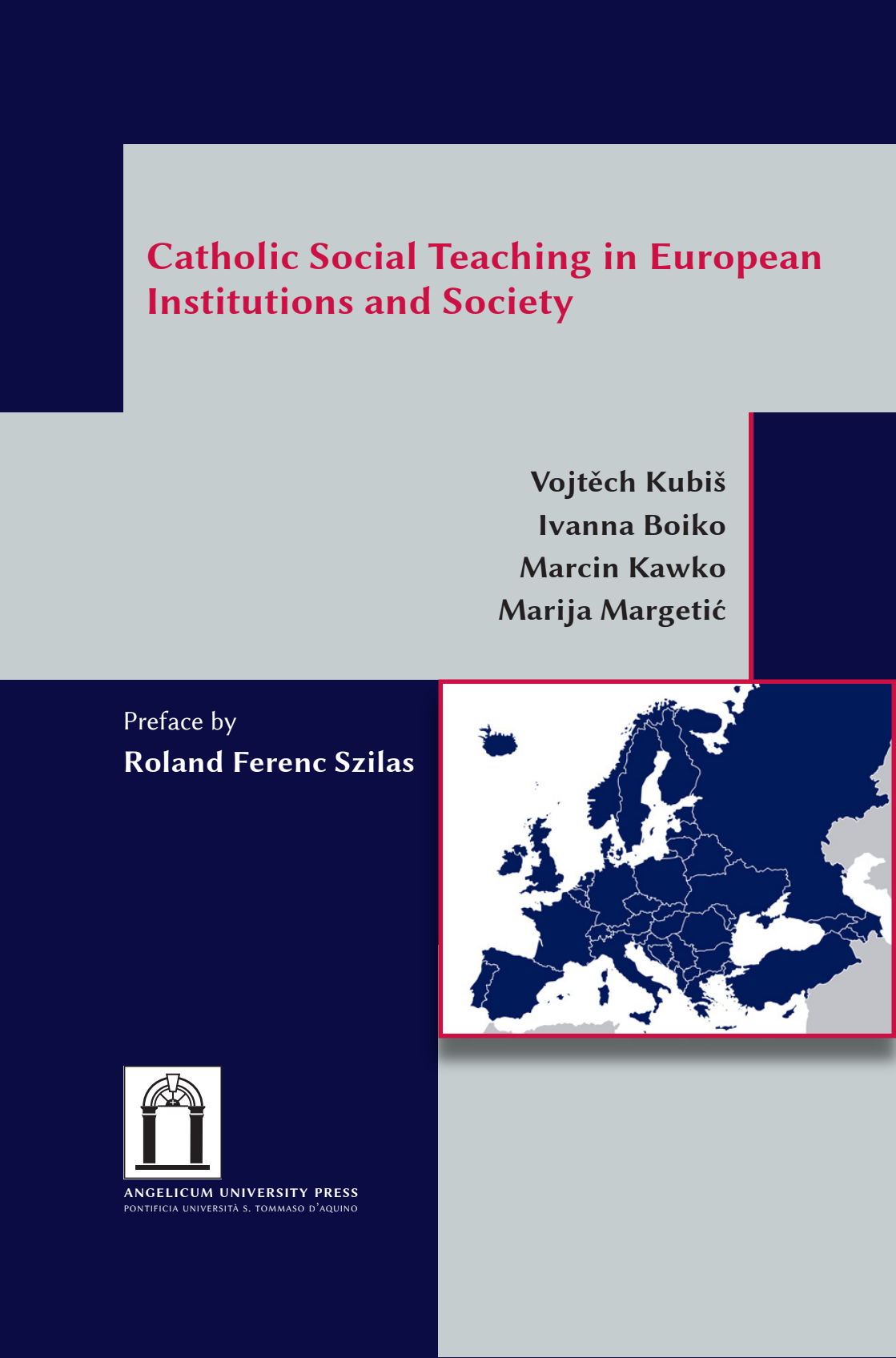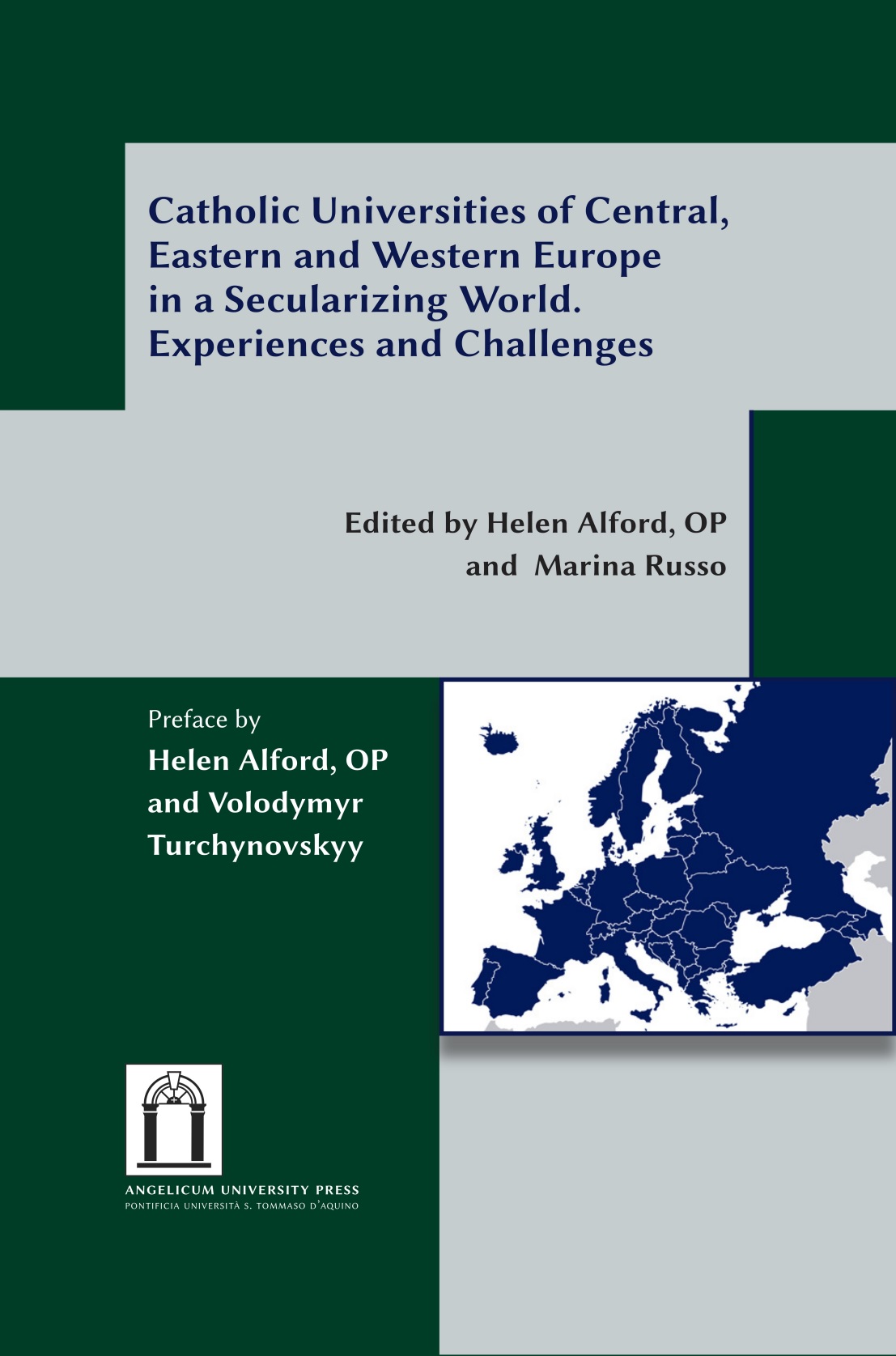 The future John Paul II finished his doctorate at the Angelicum just over 60 years ago. To mark this anniversary, the university held a series of events and special courses presenting the thought of John Paul II. The course on his social teaching involved 12 invited speakers from around the world dealing with four main topics: the encyclicals; key concepts (human person, common good, solidarity); key sectors (economic and political); and the development of social teaching during the pontificate of John Paul. In this number of OIKONOMIA, we present four of the lectures given during the course1. They are published here largely as they were given, without complete bibliographical apparatus, since our intention is to publish a book containing all the lectures, where they will be presented in a more complete form.
The future John Paul II finished his doctorate at the Angelicum just over 60 years ago. To mark this anniversary, the university held a series of events and special courses presenting the thought of John Paul II. The course on his social teaching involved 12 invited speakers from around the world dealing with four main topics: the encyclicals; key concepts (human person, common good, solidarity); key sectors (economic and political); and the development of social teaching during the pontificate of John Paul. In this number of OIKONOMIA, we present four of the lectures given during the course1. They are published here largely as they were given, without complete bibliographical apparatus, since our intention is to publish a book containing all the lectures, where they will be presented in a more complete form.
Karol Wojtyla studied at the Angelicum in the immediate postwar period, 1946-1948. One of his contemporaries was the now Cardinal Jorge Mejía, Emeritus Archivist and Librarian of the Holy Roman Church. An Argentinian, after his studies in theology at the Angelicum, Mejía went on to specialise in Biblical studies at the Biblicum. In 1977, he was called to Rome to work in the Commission for Religious Relations with the Jews, so he arrived one year before his fellow student was elected to the See of Peter. In 1986, John Paul moved him to become Secretary of the Pontifical Council of Justice and Peace, where he stayed for 8 years. So Cardinal Mejía was a key figure for this course, sharing his time as a student at the Angelicum with Wojtyla and also working with John Paul II on his social teaching when the latter was Pope.
In his inaugural lecture, Cardinal Mejía spoke evocatively of the experience of being a student in Rome in the 1940s. It clearly did not strike him then, but reflecting back on his experience now, he was surprised that there was no opportunity in the curriculum to reflect on the questions of war and peace, although the foundation that was laid for students in the thought of St Thomas gave them many useful tools for later reflection on social problems. It seems incredible to us now that theological formation could be so detached from the pressing questions of the day, but that situation, and our reaction to it, are indicative of the change in thinking about what constitutes the proper subject of theology since Vatican II. We should not forget, however, that the seeds of this change were already present before the Council. One clear demonstration of this is the request that Pius XII had made in the early 1950s to both the Gregorian and the Angelicum to provide courses for seminarians and priests on modern social problems, just a couple of years after Wojtyla and Mejía had completed their studies at the Angelicum. These courses formed the core of what became later the Faculties of Social Sciences at these two universities.
Many important themes emerged during this course; in publishing the texts of the four lectures included here, three of these themes stand out. In the book that will follow later, other key themes will also emerge.
Firstly, there is the question of the relation between John Paul’s social teaching and liberation theology, an issue that is discussed in four of the five texts presented here. Cardinal Mejía indicates that the idea of producing a document on liberation theology was already in circulation when he arrived in Rome in 1977, but it was given new impetus by John Paul when he became Pope. However, the instruction itself does not appear until after Laborem Exercens, the encyclical on work. Mejía suggests that we can already see John Paul’s concern with liberation and liberation theology in this text, since this concern comes primarily from his own life experience, first as a manual worker and then as a leader in a Church that had to resist oppression in order to survive. It almost seems from Mejía’s opening lecture on the development of John Paul II’s teaching that the latter moved him in 1986 to the Pontifical Council of Justice and Peace primarily because he wanted him, as Mejía quotes the pontiff saying, to develop a liberation theology that is “faithful to our true tradition”. Zabel too suggests that the language and thought expressed in Sollicitudo Rei Socials was strongly affected by the experience of the Pope in Chile, where violence erupted during one of the Masses (which many suspected of having been orchestrated by the Pinochet government, as recorded by George Weigel in his biography of John Paul2) and by his visit to Poland in the same year where he witnessed first hand the struggles of the Solidarity movement. What seems to emerge from this is the Pope’s understanding of, and personal closeness to, the problems to which liberation theology was responding, as well as his concern about some of its elaboration.
Gustavo Gutiérrez picks up three themes that can be found both in liberation theology and in the social teaching of John Paul II: the preferential option for the poor, the commitment to justice as part of proclaiming the Good News and the question of social conflict in history. In his text, and that of Mejía, the dialogue emerges as open and serious, showing the mutual influence that these two bodies of thought have had on each other and their connections with the wider (including biblical) traditions of the Church. Mejía gives interesting historical background on the personal relationship between himself and Gutierrez, while his comment that it was only in coming to Rome that he was able to take a more open and balanced view of liberation theology merits reflection. Obviously, the focus here is on the points in common between liberation theology and the thought of the Pope.
This discussion leads on to a second point: the relation between theology and social teaching. Both Gutiérrez and John Paul II insist that social teaching is a part of theology, whereas Zabel, in his lecture on Sollicitudo Rei Socialis, discusses opposite views on this point. For GutiérrezGutiérrez, it is important that social teaching forms part of theology because work for social justice can then be considered as integral to the proclamation of the faith, not just as a pre-requisite or prior preparation for evangelisation. Mejía wonders whether this conviction in John Paul comes from the lectures he received at the Angelicum on the Prima Secundae of the Summa Theologiae, and regards it as “part of the effort to reap the best from Liberation Theology”. Opposing views hold that social teaching starts from ethics and natural law, and that it is not helpful in a multi-religious / secular world to place social teaching within the ambit of theology rather than philosophy. It would seem that in the past, the philosophical location for social teaching was more common; the social sciences faculty at the Angelicum, for instance, which always saw itself as bringing modern social disciplines into contact with social teaching, was born out of the side of the Faculty of Philosophy, not of Theology.
The third and last point regards the influence of Thomism on the social teaching of John Paul II. In this sense, John Paul continues a very classical line of development, since modern social teaching as a whole is launched by Leo XIII, the same Pope who mandated that the theology of St Thomas was to be regarded as the basic theological approach in seminary formation; thus, the birth of social teaching is marked by the same influence. At the same time, however, one should remember that when John Paul came to the See of Rome, the theology of St Thomas was no longer in a dominant position, and in that sense it is striking (and no doubt, in part the effect of his studies at the Angelicum) that Thomism is such an important point of reference for him. This clearly stems from his earlier work in ethics, where he used elements from St Thomas with others from Scheler to develop his theory of the “acting person”. In the articles published here in OIKONOMIA, the clearest indication of the influence of St Thomas is in the lecture of Jean Claude Lavigne on the human person and the common good in John Paul II. Especially when the common good is discussed, the Thomistic approach (mediated through Maritain in particular) is clear.
Other lectures in the course, not published here, covered the interaction between neo-conservatism and the social thought of John Paul, the relations between interreligious dialogue and social thought, and the green or environmental movement. But to learn more about these lectures, we will need to wait for the prospective book.
1 The texts by Gutierrez and Mejía were presented in one lecture. Fr Gutierrez was ill and could not be present at the lecture, so he sent his text. This was read, and Cardinal Mejía responded to it.
2 See George Weigel, 1999, Witness to Hope: The Biography of John Paul II, Cliff Street Books (HarperCollins), New York, p. 534.
 IT
IT  EN
EN 
















